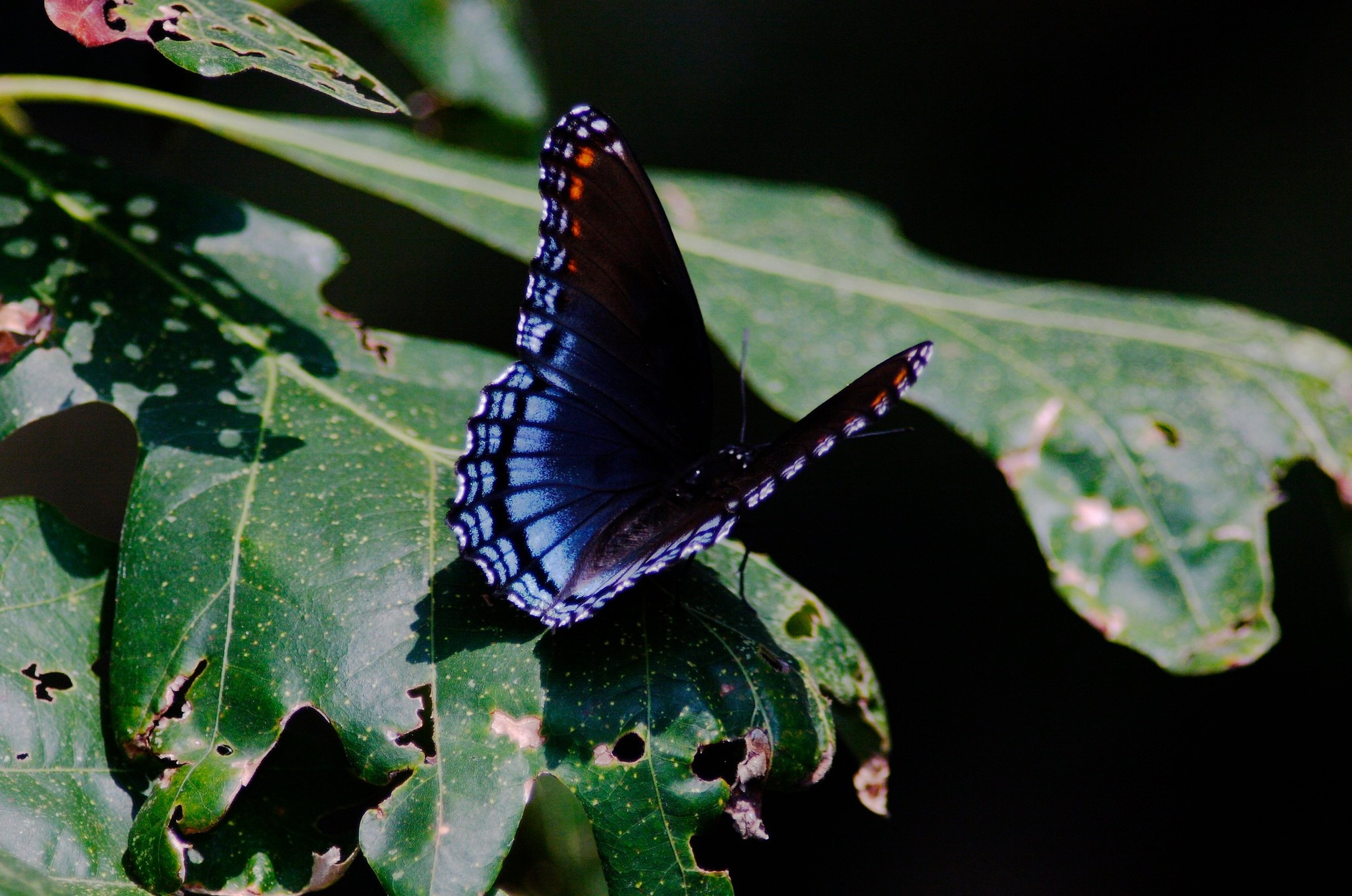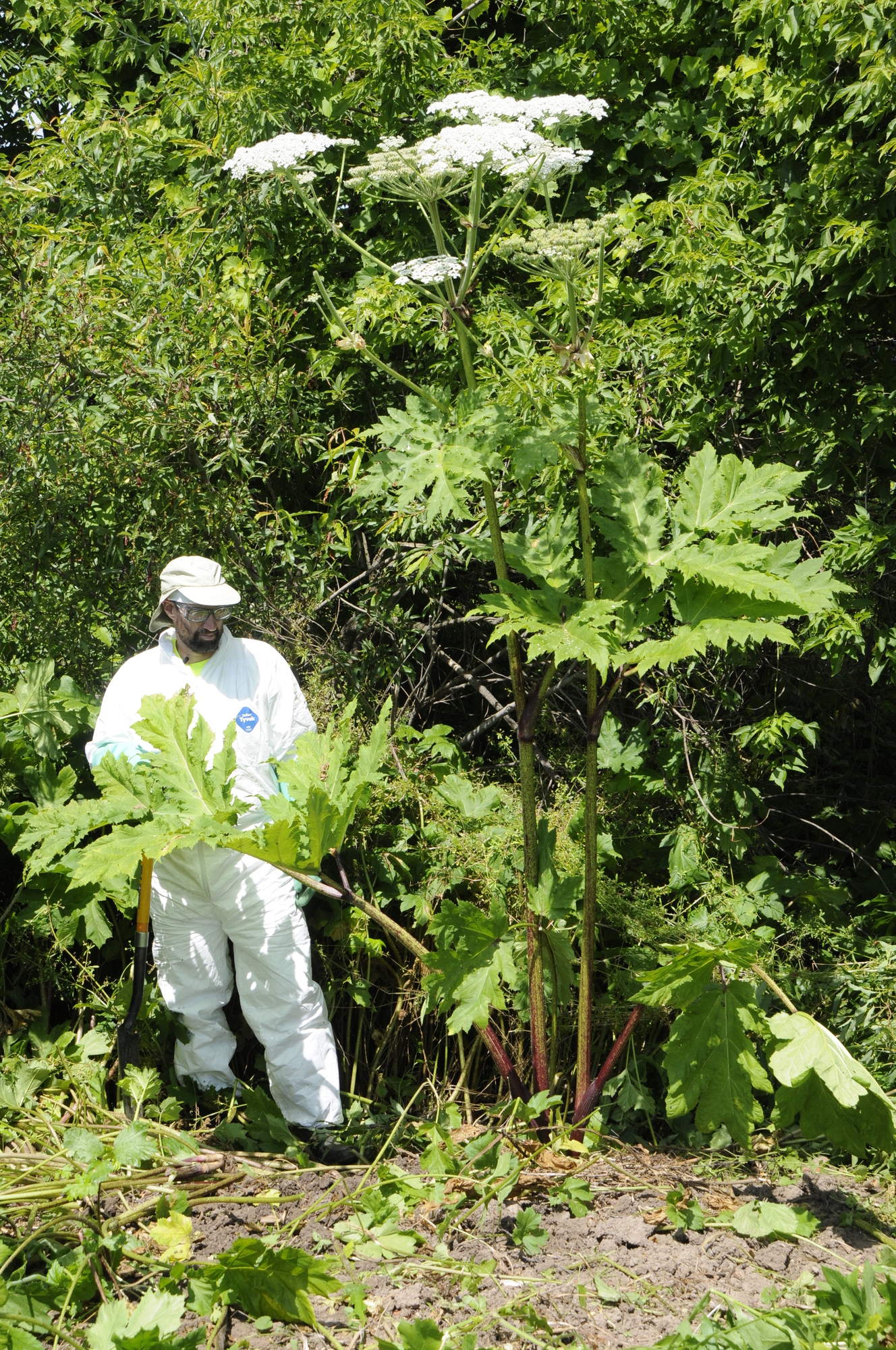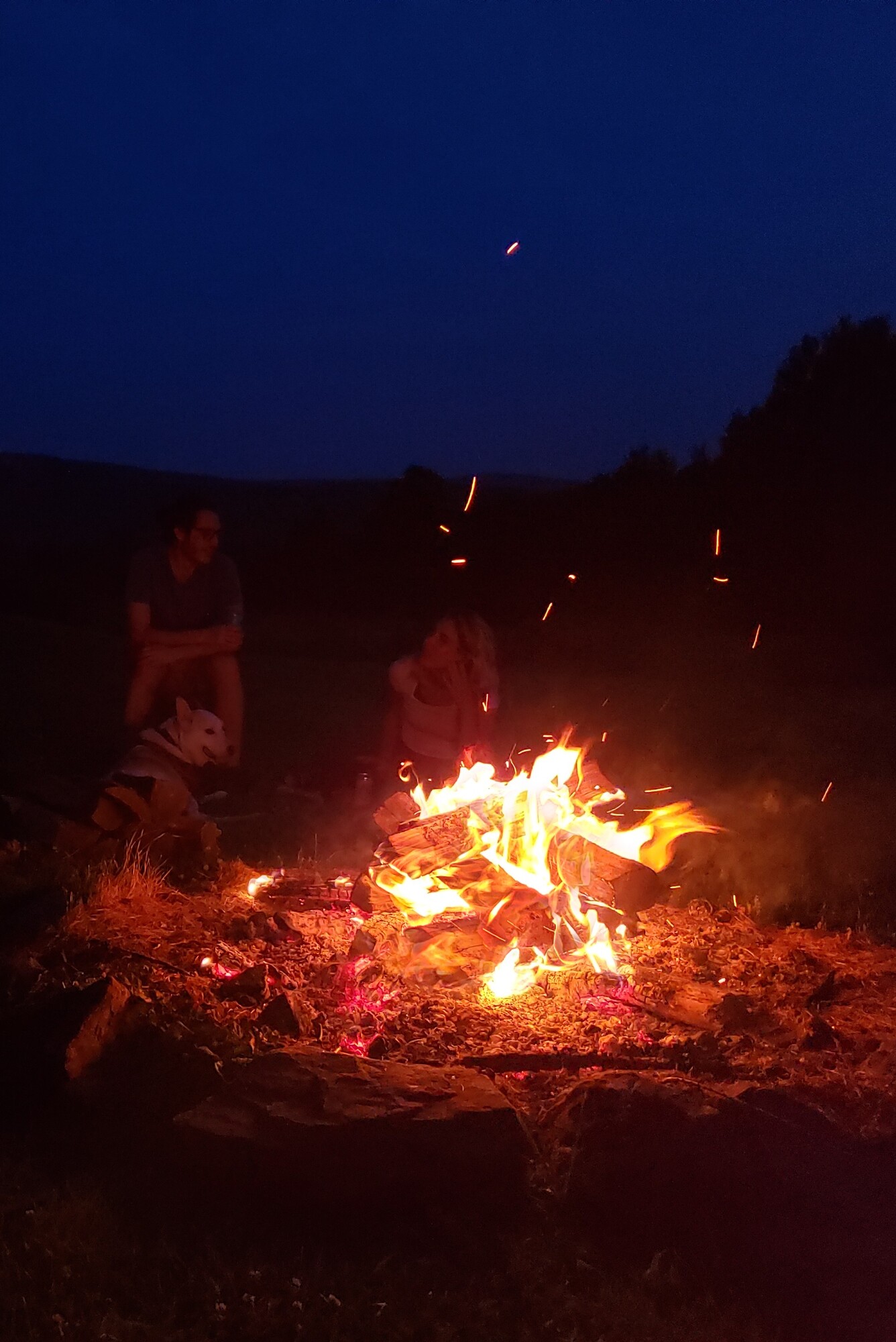This Month's Topics: - Seeking Public Comment on Draft Recreation Management Plan for Conifer-Emporium Tract Conservation Easement Until July 14
- Public Input on Draft Chenango Trail Unit Management Plan Until July 23
- National Pollinator Week is June 19-25!
- How to Identify Giant Hogweed
- Use Local Firewood this Camping Season
- Urban and Community Forestry Corner
- Upcoming Events
- 2023 NYS ReLeaf Conference: July 20-22 at Hofstra University
- Urban Forestry Grant: Applications Open—June 21 Deadline Approaching
- Community Spotlight
- Environmental Bond Act Listening Sessions
Seeking Public Comment on Draft Recreation Management Plan for Conifer-Emporium Tract Conservation Easement Until July 14 DEC is seeking public comment on a draft recreation management plan (RMP) for the Conifer-Emporium Tract Conservation Easement in the towns of Clifton, Colton, and Piercefield, St. Lawrence County. The public comment period for the draft RMP is open until July 14, 2023, and includes new recreational opportunities on the conservation easement. The Conifer-Emporium Conservation Easement (CECE) encompasses approximately 19,600 acres and is part of the Cranberry Lake Complex. The property is wholly contained within the northwestern Adirondack Park, split into eight parcels, and located near New York State Route 3 and the south branch of the Grass River. The CECE shares boundaries with the Grass River Wild Forest, Cranberry Lake Wild Forest, and Horseshoe Lake Wild Forest, as well as additional conservation easements. The CECE was purchased in 1990, ensuring the property will remain a privately owned sustainable working forest, protecting natural resources, and allowing for the proposal of specific public recreation opportunities. Motorized opportunities for recreation: - Opening three miles of roads to public passenger vehicles;
- Construction or improvement of 11 parking areas; and
- Continued maintenance of 27.3 miles of roads and trails open to public snowmobile use.
Non-motorized opportunities for recreation: - Construction of six miles of non-motorized access trails;
- Construction of six primitive campsites, including two campsites that meet universal accessibility standards;
- Addition of a hand launch accessible to people with disabilities to provide non-motorized water access to the south branch of the Grass River;
- Establishment of a rock-climbing area; and
- Continuation of hunting, fishing, and trapping permitted throughout the property, subject to applicable seasons and regulations.
A virtual presentation, copy of the draft RMP, and an online survey to submit comments can be found on the DEC website. DEC is accepting public comments through July 14, 2023. In addition to the online survey, comments can also be submitted by: - Email to r6.ump@dec.ny.gov; or
- Mail to Peter D'Luhosch, Program Manager, DEC Potsdam Sub-Office, 190 Outer Main St Suite 103, Potsdam, NY 13676.
Public Input on Draft Chenango Trail Unit Management Plan Until July 23 DEC encourages the public to comment on draft updates to the Chenango Trail Unit Management Plan (UMP). The plan guides the future management and use of 5,455 acres of State land in Chenango and Broome counties. The Chenango Trail Unit includes Bobell Hill, Beaver Flow, Bumps Creek, Coventry, and Oak Ridge State forests in the towns of Colesville, Afton, Bainbridge, Coventry, Green, and Oxford. Highlights of the plan include designated snowmobile trails and a section of trail offering motorized access for visitors with mobility impairments. The plan also proposes the development of two new sections of public forest access road to improve visitor access. The draft plan and additional information are available on DEC's website. Proposed management actions will be guided by DEC's Strategic Plan for State Forest Management, which focuses on ecosystem health and diversity, economic benefits, recreational opportunities, forest conservation, and sustainable management. State lands covered by the draft plan offer many recreational opportunities including hiking, camping, bird watching, fishing, hunting, trapping, snowmobiling, cross‐country skiing, snowshoeing, and all-terrain vehicle (ATV) access by permit for visitors with mobility impairments. DEC is accepting comments on the draft plan until Sunday, July 23, 2023, by: - Email with the subject line "Chenango Trail Unit" to R7.ump@dec.ny.gov; and
- Mail to Jason Schoellig, Senior Forester, NYSDEC, 2715 State Route 80, Sherburne, NY 13460, or by phone at (607) 674-4017.
For more information, read the May 24 press release.
National Pollinator Week is June 19-25! 
Bzz! It's National Pollinator Week! Held in late June, Pollinator Week is all about spreading awareness for the importance of butterflies, bats, birds, bees, and beetles. But did you know that flowers aren't the only pollinator-friendly plants? Many of our native hardwood trees provide shelter and food for a variety of common pollinators—meaning, you can add "support pollinators" to the seemingly-endless list of the benefits trees provide for the world. Some of the most pollinator-friendly species include both red and white oak (known to support 385 insect species), black cherry (361 insect species), and paper and gray birch (320 insect species). Next time you're looking to plant a tree, go native to support pollinators and the planet! Check out the DEC website to find helpful information about how to choose the right tree for your property, and planting tips, as well as resources for choosing native flowers, grasses shrubs, trees, and vines (PDF). Pictured: Native butterfly on an oak tree. Courtesy of jpmatth, Flickr.
How to Identify Giant Hogweed 
Giant hogweed plants are beginning to bloom across many parts of the state, making it a prime time to spot this harmful invasive species. Giant hogweed is a large, flowering plant from Eurasia with sap that can cause painful burns and scarring. Adult giant hogweed plants tend to be 7-14 feet tall with an umbrella-shaped cluster of white flowers up to 2.5 feet wide. The stem is green with purple splotches and coarse white hairs, and the leaves are large (up to 5 feet across), incised, and deeply lobed. The most common lookalike found in NY is our native cow parsnip, which flowers earlier and does not have the purple splotches on the stem (but can also cause burns). You can find more identification tips, including a table of other lookalikes, on our website. If you think you have found giant hogweed: - Do not touch it.
- From a safe distance, take photos of the plant's stem, leaves, flowers, seeds, and the whole plant.
- Report your sighting to DEC by emailing photos and location information to ghogweed@dec.ny.gov or by calling (845) 256-3111. DEC staff will help you confirm if it is giant hogweed and provide you with information on how to control it.
Pictured: DEC staff member wearing protective equipment next to adult giant hogweed plant.
Use Local Firewood this Camping Season 
Many people like to take firewood from their homes before traveling to a campsite. Invasive pests like the emerald ash borer or Asian longhorned beetle often hitch a ride to new areas in untreated firewood. Transport of untreated firewood across the state has caused outbreaks of these damaging pests. Since 2009, New York State has regulated the movement of firewood to help control the spread of invasive species and diseases. Untreated firewood must have been grown in NY and cannot be moved more than 50 miles from where it was grown or its source. Producers of firewood for sale are allowed to declare their business as the source provided the wood was grown within 50 miles of their business and they must maintain documentation. Those moving untreated firewood for their own use must fill out a Self-Issued Certificate of Origin (PDF). Treated firewood, which has been heated to a core temperature of 160° F for 75 minutes and labeled as "New York Approved Heat-treated Firewood/Pest Free," can be moved without restrictions. DEC has an interactive map that shows if firewood's source and its destination are within 50 miles. Violation of firewood regulations can result in fines, penalties, and the potential destruction of beloved trees and habitats. The safest way to enjoy a campfire and protect New York forests is to buy and burn local firewood at your destination. Read more about New York's firewood regulations on DEC's website. Pictured: Family enjoying a campfire with their dog.
Urban and Community Forestry Corner Upcoming events ReLeaf Tree Walk (In-person workshop) – June 21 from 10:00 a.m.–12:00 p.m. at Oakwood Cemetery in Syracuse
In this guided walk, Dr. Don Leopold of SUNY ESF will discuss basic tree biology and tree identification as he leads attendees around the 160-acre Oakwood Cemetery. This is an outdoor event, so please wear comfortable walking shoes and bring sunscreen and a water bottle. Register online now to reserve your spot. 2023 ReLeaf Conference– July 20–22 at Hofstra University in Hempstead, NY
This year's conference will be held at Hofstra University and will feature: - Keynotes from Dan Lambe, CEO of Arbor Day Foundation, and Vinnie Simeone, Director of Planting Fields Arboretum State Historic Park;
- A visit to Clark Botanic Garden;
- A tree planting demo; and
- Opportunities to network with fellow tree-people at the Friday night picnic at Jones Beach State Park.
To register and find more information, visit the NYS Urban Forestry Council's website. Be sure to register by June 30 as late fees for registration begin July 1. Urban Forestry Grant: Applications Open—June 21 Deadline Approaching
Approximately $3 million in Urban and Community Forestry (UCF) grants is available from the NYS Environmental Protection Fund for tree inventories, community forest management plans, tree planting, and tree maintenance. The Request for Applications (RFA) (PDF) outlines deadlines, eligible applicants and projects, application scoring, and a list of local DEC urban foresters who can provide technical assistance to applicants. - 6/21/23 - Deadline for submitting UCF1 - Tree Inventory and Community Forestry Management Plan applications.
- 8/16/23 - Deadline for submitting UCF2 - Tree Planting applications, and Tree Maintenance applications.
Community Spotlight
Folks who attended last summer's ReLeaf conference may remember the emerald ash borer (EAB) presentation by Angello Johnson, a Plant Resource Technician with the Environmental Division of the Saint Regis Mohawk Tribe and 6th generation black ash basket maker. Angello works to protect black ash trees which are threatened by EAB. The Tribe, which spans the border of New York and Canada, is working to protect their forests and is starting a Native Plant Nursery. Recently Jessica Raspitha, program manager for the Environmental Divisions' Land Resource Program, was interviewed by Northern Woodlands about the Tribe's conservation efforts to restore native plants along waterways and source seeds for their plant nursery. Check out the article Working on Restoration in Akwesansne.
Environmental Bond Act Listening Sessions The $4.2 billion Clean Water, Clean Air, and Green Jobs Environmental Bond Act prioritizes investments in environmental justice, climate change mitigation, shoreline restoration, flood resilience, water quality, open space conservation, recreational resources, and green jobs. You can learn more about the Bond Act by attending an educational listening session. Two sessions have been held. Register for any of the remaining sessions: - Virtual Meeting: June 26, 6 to 8 p.m.
- Saranac Lake: July 14, 1 to 3 p.m., North Country Community College, Sparks Athletic Complex Alumni Gymnasium
- Capital Region: July 20, 1 to 3 p.m. University at Albany, Campus Center Auditorium
- Virtual Meeting: July 26, 6 to 8 p.m.
- Brooklyn: August 9, 6 to 8 p.m., Brooklyn College
- Lower Hudson: August 15, 1 to 3 p.m., Westchester County Center, Little Theater
- Bronx: August 22, 6 to 8 p.m., La Central YMCA Gymnasium
- Brentwood: August 24, 1 to 3 p.m., Suffolk County Community College
Sessions feature a presentation on the Bond Act and an opportunity for one-on-one discussion with State experts.
|



No comments:
Post a Comment